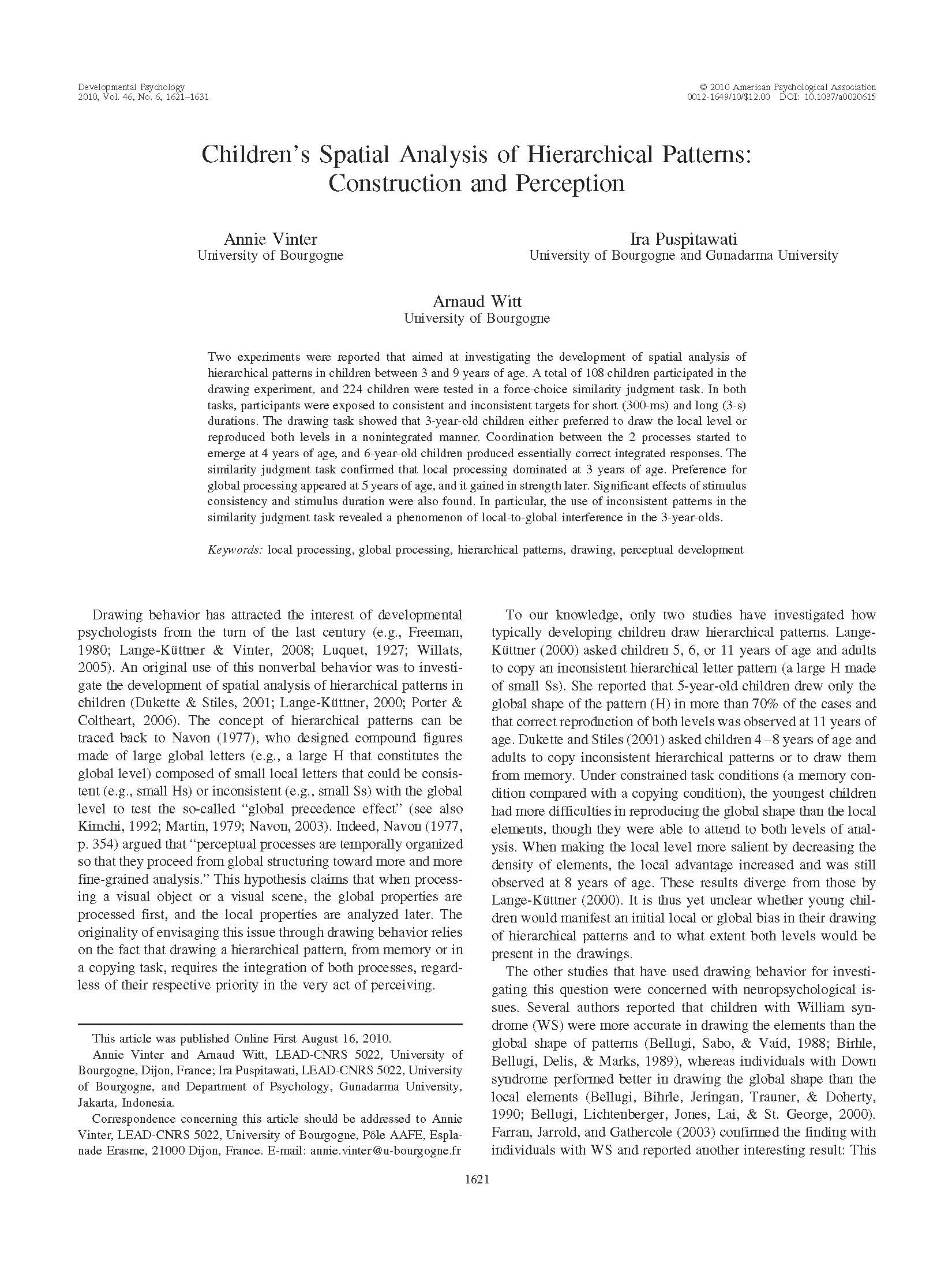Two experiments were reported that aimed at investigating the development of spatial analysis of hierarchical patterns in children between 3 and 9 years of age. A total of 108 children participated in the drawing experiment, and 224 children were tested in a force-choice similarity judgment task. In both tasks, participants were exposed to consistent and inconsistent targets for short (300-ms) and long (3-s) durations. The drawing task showed that 3-year-old children either preferred to draw the local level or reproduced both levels in a nonintegrated manner. Coordination between the 2 processes started to emerge at 4 years of age, and 6-year-old children produced essentially correct integrated responses. The similarity judgment task confirmed that local processing dominated at 3 years of age. Preference for global processing appeared at 5 years of age, and it gained in strength later. Significant effects of stimulus consistency and stimulus duration were also found. In particular, the use of inconsistent patterns in the similarity judgment task revealed a phenomenon of local-to-global interference in the 3-year-olds.
Children’s spatial analysis of hierarchical patterns: Construction and perception
